Autumn is a very favourable season for photography: nature is adorned with 1000 colours, dead leaves are scooped up with a shoveland you’re tempted to take advantage of it. Discover 5 simple and effective tips to make the most of the season and take pictures that will honour what nature has to offer.
Pin this article on Pinterest for future reference!
1. Use Golden Hours
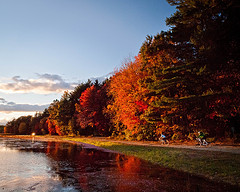
You may feel like I’m repeating myself, but the light of Golden Hours (those magical moments when the sun is low on the horizon) lends itself particularly well to the photography of these autumn colours. Indeed, it is a light with very hot which reinforces the already warm colours of autumn (red, orange, yellow…). Taking your pictures at these times will therefore allow you to obtain colours that are very saturated and therefore to transcribe the whole of theintensity of those warm tones.
But beware: since the image is dominated by warm light, the automatic white balance of your camera will tend to compensateThis means cooling down the image tones, which is not desirable. So think about the reheat in post-processing, or use the “Daylight” setting on your camera if you are not yet developing your images.
2. Also photograph in overcast weather
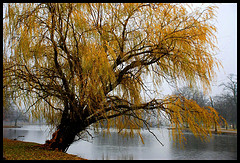
It may seem like contradictory with what I just said, but I’m not! Indeed, the very diffuse of overcast weather is very softand almost omnidirectional. It will thus avoid the shadows of a full sun. This type of weather creates an atmosphere romantic and colors lozengeswhich allows to retranscribe all the humid and slightly cool atmosphere of autumn, which evokes like a wait…a moment when time is suspended. Think of a foggy fall morning by a lake, and I think you get the idea 😉.
Technically, one must be careful with this type of light: being rather cold (blue), it clashes with the warm tones you’re trying to capture. So here too, you will have to play the white balance in post-processing in order to make these colours appear without making the atmosphere that you are trying to make the viewer feel. It is a balance to be found on a case-by-case basis, so don’t hesitate to spend some time there to sublimate your photo!
3. Don’t photograph ONLY the colours of autumn
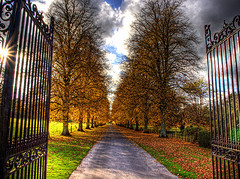
And yes, it is not because you have a palette of colors in front of your eyes that you have to forget the basic rules of photography, and in particular that of finding an strong topic. Because pictures of trees in autumn are very nice, but you’ll soon find that they all look alike and none of them really matter. Too bad if you got up at 5am to go and take pictures by the lake! 😀
It is therefore important to understand that colours are not not your subject, and that they do not allow you not to skip the compositionthe choice of subject, light, shadows, contrast, the lines of forcethe atmosphere, the emotion, etc. In fact, these colors strengthen the impact of an image that must already be of quality at the base. Simple exercise: imagine your image in black and white. If it’s no longer of interest, it’s because the picture’s not good enough in the first place.
4. Show originality
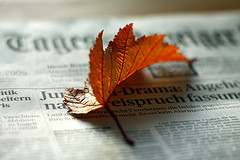
The problem with the “ideal conditions for photography” is that you are not not the only ones to have noticed it 😉 There is no shortage of autumn photos, and to make a snapshot that stands out from the crowd and catches the eye, you have to beoriginality.
There are as many ways to stand out from the crowd as there are photographers, but there are two tricks that work well:
- Remember to take pictures nearer we more rarely see photos of a leaf, or even part of a leaf. They can be very strong if you manage to be a little bit creative. Use depth of field, an original composition, … Create !
- Use thewater the characteristic of autumn is also that it is a season rainy (especially in my far north 😉 ). However, the reflections Autumn colours in water can be very interesting and create slightly abstract shapes that will give impact to your images. Also don’t forget the naturally wetlands (lakes, rivers, marshes): these are often natural areas. exceptional and preserved that will give you the opportunity to take pictures of autumn landscapes that have the “extra something”.
5. Saturation is king
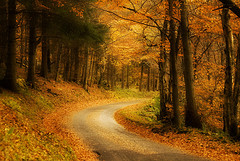
In order to highlight such colours, they must be saturate. In French, they have to “fart” a little more. How do you do that? There are several methods:
- Use a polarizing filter. As I said before, this accessory makes it possible to saturate colours, and it can be very useful in the fall. Abuse it!
- If you’re still shooting in JPEG (and I hope not!), use a custom image style on your device to push the saturation level all the way up.
- If you shoot in RAW (congratulations!), you will be able to pep up the colors in post-processingThe software can be used with tools called Vibrance or Colour Enhancement, depending on the software. What we will see in a video a little later, that’s not the subject of this article 😉
Here, I hope that these few elements will allow you to us treat the eyes of many exceptional autumn snapshots, and see some of them on the Flickr group of the Sunday Photo Review operation (even if it is already the case 😉 ).
Leave a comment if you have remarks or questions, and if you want to be informed directly in your mailbox of the next articles and videos, subscribe to the newsletter (on the right side of the screen).
And don’t forget to share the article! 🙂




Discussion about this post